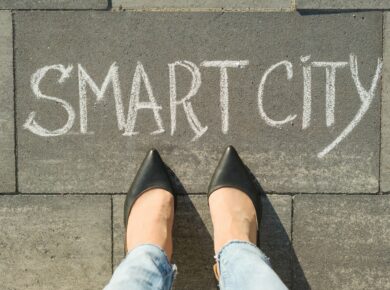When most people hear “blockchain,” they think of Bitcoin. However, blockchain technology has evolved far beyond its cryptocurrency roots, offering transformative potential across various industries. By providing a secure, transparent, and decentralized method of recording transactions, blockchain is revolutionizing the way businesses operate. Let’s explore how blockchain is being applied innovatively across different sectors.
1. Understanding Blockchain Technology
1.1 What is Blockchain?
Blockchain is a distributed ledger technology that records transactions across multiple computers in a way that ensures security and transparency. Each transaction is added as a “block” and linked to previous transactions, forming a “chain.” This decentralized nature makes it nearly impossible to alter past records, ensuring the integrity of the data.
1.2 Key Features of Blockchain
- Decentralization: No central authority controls the blockchain, enhancing security and reducing the risk of fraud.
- Transparency: All participants have access to the same information, promoting trust and accountability.
- Immutability: Once a transaction is recorded, it cannot be altered, ensuring the integrity of the data.
2. Blockchain in Supply Chain Management
2.1 Enhancing Transparency
Blockchain enhances transparency in supply chains by providing a clear, unalterable record of a product’s journey from origin to consumer. This transparency helps in verifying the authenticity of products, preventing counterfeiting, and ensuring compliance with regulations.
2.2 Improving Efficiency
Smart contracts, which are self-executing contracts with the terms directly written into code, streamline processes by automating transactions. This automation reduces the need for intermediaries, speeding up transactions and reducing costs.
2.3 Ensuring Traceability
In industries like food and pharmaceuticals, traceability is crucial. Blockchain allows for real-time tracking of products, ensuring that consumers and businesses can trace the origin and journey of their goods, improving safety and trust.
3. Blockchain in Healthcare
3.1 Securing Patient Data
Blockchain provides a secure way to store and share patient data, ensuring that sensitive information is accessible only to authorized parties. This security reduces the risk of data breaches and ensures patient privacy.
3.2 Streamlining Medical Records
Medical records can be fragmented across different providers, leading to inefficiencies and errors. Blockchain enables the creation of a unified, up-to-date patient record accessible by authorized healthcare providers, improving care coordination and outcomes.
3.3 Enhancing Drug Supply Chains
Blockchain can track pharmaceuticals through the supply chain, ensuring the authenticity of drugs and preventing counterfeit medications from reaching patients. This traceability is crucial in maintaining the integrity of the drug supply.
4. Blockchain in Finance
4.1 Simplifying Cross-Border Payments
Cross-border payments are often slow and expensive due to the involvement of multiple intermediaries. Blockchain facilitates faster, cheaper, and more secure cross-border transactions by eliminating the need for intermediaries and providing a transparent transaction record.
4.2 Revolutionizing Asset Management
Blockchain enables the tokenization of assets, allowing them to be divided into smaller, tradable units. This tokenization makes it easier to trade and invest in assets, increasing liquidity and accessibility.
4.3 Enhancing Fraud Detection
The transparency and immutability of blockchain make it easier to detect and prevent fraudulent activities. Financial institutions can use blockchain to create secure, tamper-proof records of transactions, improving the overall security of the financial system.
5. Blockchain in Real Estate
5.1 Streamlining Property Transactions
Real estate transactions involve numerous intermediaries and extensive paperwork, making the process slow and expensive. Blockchain can streamline these transactions by automating processes through smart contracts, reducing the need for intermediaries and speeding up transactions.
5.2 Ensuring Transparent Property Records
Blockchain can create transparent and immutable records of property ownership, ensuring that all parties have access to accurate information. This transparency reduces the risk of fraud and disputes over property ownership.
5.3 Facilitating Fractional Ownership
Blockchain enables fractional ownership of real estate properties through tokenization. This approach allows multiple investors to own a share of a property, increasing investment opportunities and liquidity in the real estate market.
Conclusion
Blockchain technology is rapidly expanding beyond its original use in cryptocurrencies, offering innovative solutions across a wide range of industries. From enhancing transparency in supply chains and securing patient data in healthcare to simplifying cross-border payments and streamlining real estate transactions, blockchain is transforming how businesses operate. As the technology continues to evolve and mature, its potential to drive efficiency, security, and trust in various sectors will only grow, heralding a new era of decentralized and transparent operations.







